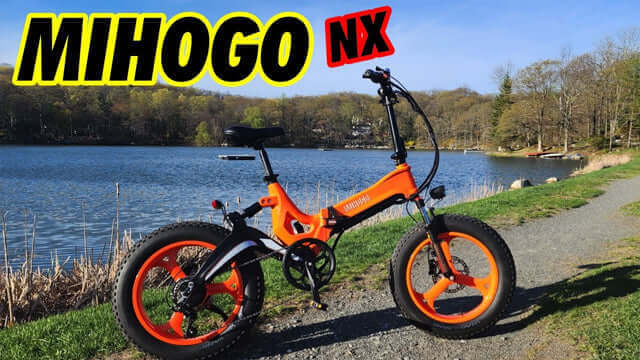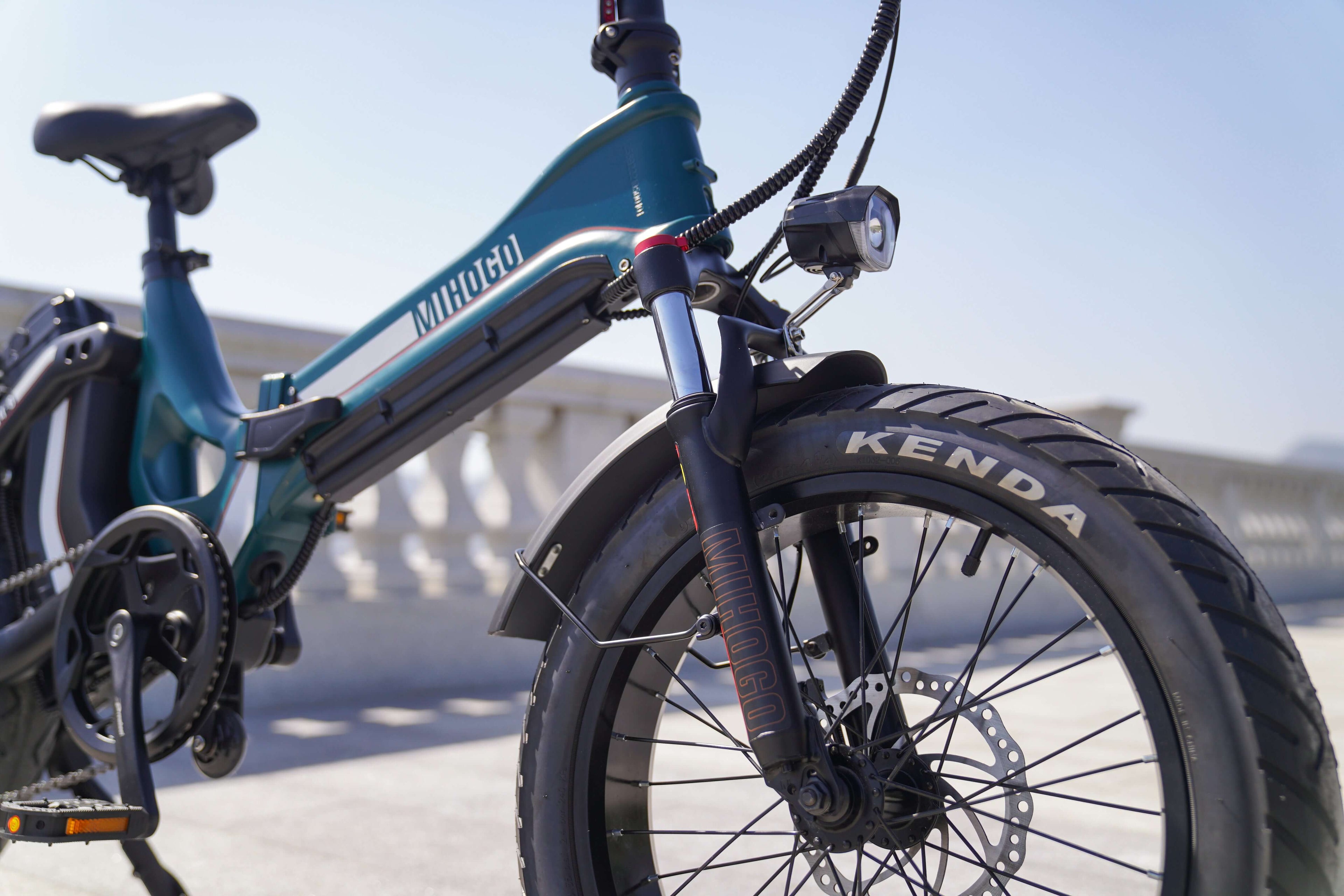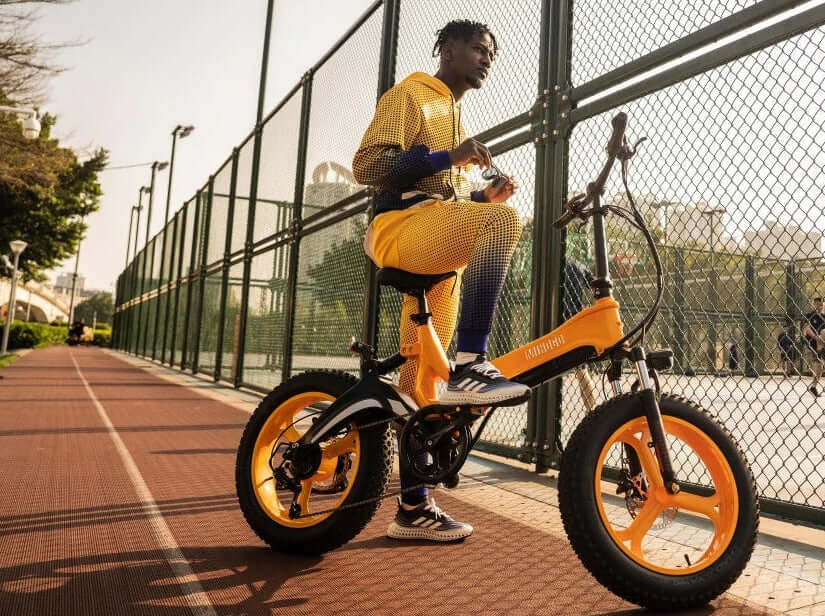Why Ebikes Need Specialized Safety Equipment
Unlike traditional bicycles, ebikes present unique safety challenges. Your Mihogo ebike can reach speeds that most casual cyclists rarely achieve, meaning higher impact forces in accidents and longer stopping distances. The added weight from battery systems (typically 45-70 pounds vs. 20-30 pounds for regular bikes) creates greater momentum during crashes.
According to safety experts, riders without helmets are 85-88% more likely to suffer serious head injuries. At ebike speeds, even minor spills can result in significant injuries without proper protection.
Essential Safety Gear for Every Mihogo Rider
NTA 8776 Certified Helmets: The Gold Standard
The Dutch NTA 8776 certification is specifically designed for ebike speeds, requiring helmets to protect against higher impact forces and provide greater coverage on the sides and back of the head. Unlike standard bicycle helmets that protect up to 15.5 mph, NTA 8776 certified helmets are tested for speeds up to 28 mph.
Key features to look for:
- MIPS (Multi-directional Impact Protection System) technology
- Extended coverage compared to traditional bike helmets
- Integrated LED lighting systems
- Proper ventilation for longer rides
In Europe, standard pedelecs (25 km/h) can use certified bicycle helmets, but faster ebikes require specialized protection. For your Mihogo Air Max or MIHOGO ONE Utility models, investing in an NTA 8776 certified helmet provides optimal protection.
High-Performance Lighting Systems
Front Lights: Your primary safety tool for visibility and illumination. Modern ebike lights should provide:
- Minimum 400 lumens output
- Multiple modes (steady beam, flashing)
- USB rechargeable functionality
- Compliance with EC standards and proper mounting up to 1.5m from ground
Rear Lights: Essential for alerting traffic from behind
- Bright red LED with flashing capability
- Must emit at least four candela if using flashing mode
- Integration with helmet or seat post mounting
Daytime Running Lights: Significantly reduce accident risks even during bright daylight, making you visible to drivers who might not expect your ebike's speed.
High-Visibility Reflective Clothing
Studies show that reflective knee and ankle strips are more effective than static back panels because the pedaling motion catches drivers' attention.
Essential reflective gear includes:
- Reflective vests with 360-degree visibility
- Clothing with moving reflective elements on arms and legs
- LED-enhanced reflective vests that combine traditional reflection with active lighting
Protective Gloves and Eyewear
Full-Finger Cycling Gloves: At Mihogo ebike speeds, your hands need serious protection
- Palm padding for comfort and impact protection
- Enhanced grip for wet conditions and vibration dampening
- Touchscreen-compatible fingertips for navigation
Cycling Glasses: At ebike speeds, eyes need protection from wind, dust, insects, and road debris that can impair vision
- UV protection for longer rides
- Clear or adaptive lenses for varying light conditions
- Secure fit that won't shift during rides
Advanced Protection for Trail and Urban Riding
Knee and Elbow Pads
For riders using the MIHOGO RX 2.4 for trail adventures or new ebike users still building confidence, knee and elbow pads provide crucial protection at impact points. Modern options offer:
- Lightweight, breathable materials
- D3O smart padding that hardens on impact
- Ergonomic design for pedaling comfort
- Articulated joints and stretch fabrics for freedom of movement
Specialized Footwear
Closed-toe shoes with good pedal grip are essential for ebike safety. Avoid loose footwear that could catch in pedals or chain mechanisms.
European Safety Regulations for Ebikes
Legal Requirements by Country
As of 2025, several European countries are considering mandatory helmet laws for all ebike categories. Current requirements vary:
Germany: Standard pedelecs treated as bicycles; S-pedelecs require registration and insurance France: Expanded subsidies for ebike purchases up to €400 Netherlands: Adaptive regulations with detailed trail access maps Italy: Tax incentives up to 30% (maximum €3,000) for ebike purchases
Speed Classifications and Safety Requirements
- Class 1 & 2 (up to 25 km/h): Standard helmet requirements
- Class 3 (up to 45 km/h): Enhanced protection required, including specialized helmets and often registration
Weather-Specific Safety Considerations
Wet Weather Riding
Rain requires specific gear including quality fenders, water-resistant glasses with clear lenses, and waterproof jackets with sealed seams. Your Mihogo ebike's performance in wet conditions demands enhanced visibility and protection.
Night Riding Safety
Beyond standard lighting, night riding requires:
- Helmet-mounted lights for reading signs
- Backup batteries for emergency situations
- Enhanced reflective clothing coverage
- Consider carrying portable phone chargers for emergency communication
Maintenance and Replacement Guidelines
Helmet Replacement Protocol
After any crash or significant impact, helmets must be replaced immediately. The protective foam compresses during impact, and internal damage often isn't visible externally.
Regular inspection schedule:
- Monthly visual checks for cracks or damage
- Annual replacement for daily riders
- Immediate replacement after any impact
Light Maintenance
- Check battery levels before each ride
- Clean lenses monthly for optimal brightness
- Test flashing modes regularly
- Carry backup lights for longer trips
Building Your Safety Gear Collection
Tier 1 Essentials (Start Here)
- NTA 8776 certified helmet with MIPS
- Front and rear LED lights (400+ lumens front)
- High-visibility reflective vest
- Full-finger cycling gloves
Tier 2 Recommended (Add Next)
- Cycling glasses with UV protection
- Knee and elbow pads for trail riding
- Backup lighting systems
- Weather-specific clothing
Tier 3 Advanced (Complete Setup)
- Integrated lighting systems
- Professional protective gear
- Emergency communication devices
- Seasonal specialized equipment
Conclusion: Investing in Your Safety
Your Mihogo ebike represents a significant investment in sustainable transportation and recreational enjoyment. Protecting that investment—and yourself—with proper safety gear is equally important. Quality safety gear is always less expensive than dealing with injuries or accidents.
Start with essential items and gradually build your collection based on your riding style and local conditions. Whether you're commuting through European cities on your Mihogo Air Max or exploring countryside trails with the MIHOGO RX 2.4, the right safety equipment ensures you can enjoy every ride with confidence.
Remember: the best safety gear is the equipment you'll actually use consistently. Choose comfortable, high-quality items that fit your riding style, and make safety a habit, not an afterthought.
External References:






